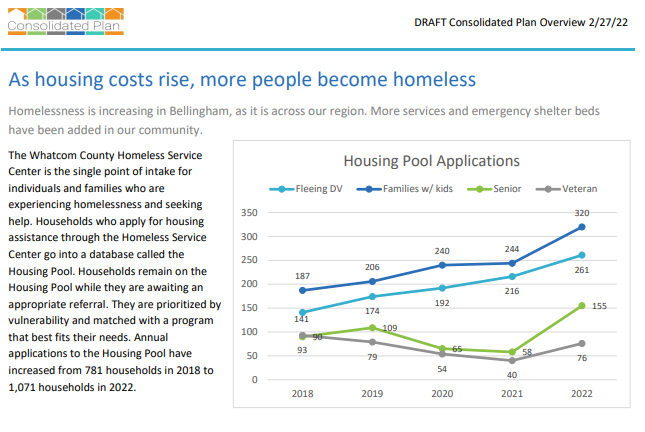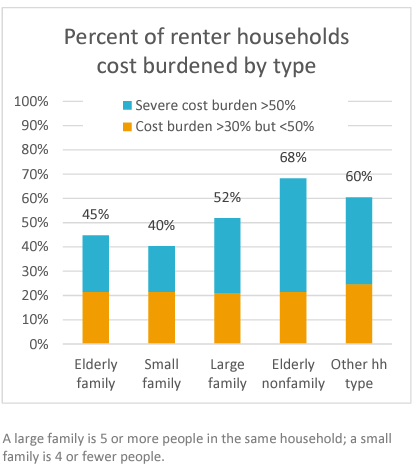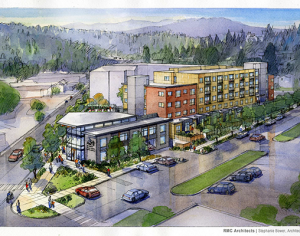Bellingham’s Homeless Crisis is a Housing Crisis and What You Can do to Help
A while ago I shared some brief details on the City of Bellingham’s upcoming Consolidated Plan, what it is and why it matters. The Consolidated Plan is now in draft form on the COB website and our city needs you to review and comment by March 31st. You can read the Consolidated Plan Overview here. Your comments will give them the best data to develop the best possible plan for housing in Bellingham. This is a perfect example of the importance of collective action to execute change.
In an effort to learn everything we could about the Consolidated Plan and the central role that housing plays in it, I sat down with both Samya Lutz, City of Bellingham Housing & Services Program Manager and Kate Bartholomew, City of Bellingham Development Specialist, and who is the primary author of the Consolidated Plan. The City of Bellingham has about $9 million each year to spend on housing problems, but these are restricted funds and can only be spent on housing projects for our lowest income residents, and those with special needs (such as elderly or disabled persons.)
Both Lutz and Bartholomew inform and build the development of the Consolidated Plan, which is an assessment of community development needs, and an analysis of the housing market for low-income households. It presents the goals, strategies and specific activities that are implemented annually in order to address those needs. Lutz and Bartholomew work tirelessly on housing and homelessness and see it from a very different perspective than most of us do, on a day-to-day basis. Bartholomew is also on the Whatcom Housing Alliance Steering Committee and we’re very thankful for her input and insight on housing. While the conversations with Lutz and Bartholomew were both extremely educational, they were, frankly, alarming.
Problems are getting worse, dollars aren’t going as far and people are becoming homeless at a faster rate.
The Consolidated Plan runs on a 5-year cycle, with this current Plan covering 2023-2027. It focuses on identifying needs for our low to moderate income population – those below the 80% Adjusted Median Income (AMI) level. The median household income in Bellingham is about $60,000, so that means identifying needs for the population that is about $48,000 median household income, or less.
In my conversations with Lutz and Bartholomew, it became clear that funding for housing cannot meet the need, and that our community’s perception of our homeless crisis is deeply out of alignment with the reality. Homelessness in Bellingham, and everywhere, is a housing problem and what we see on the streets is only the tip of the iceberg.
“I like to use the analogy of an iceberg. The people who you might look at as homeless, that is just the person sticking out of the water. What people don’t realize is that about 80% of people are in shelter and most likely they are going to school, working and they’re not living on the street,” said Bartholomew.
Let’s look at the Housing Pool, which is a tabulation of those that are on the verge of homelessness and are waiting for housing provided by our local, state and federal funding.
As you can see in the graph below, the increase in housing prices is leading to a staggering increase in numbers in our Housing Pool. The Whatcom County Homeless Service Center is the single point of intake for individuals and families who are experiencing homelessness. “Problems are getting worse, dollars aren’t going as far and people are becoming homeless at a faster rate,” Lutz shared.
“Annual applicants to the Housing Pool have increased from 781 households in 2018 to 1,071 households in 2022.”

The Housing Pool houses those that have the greatest need, first. Those with families or mental health issues have the greatest access to housing. The wait period for the others is upwards of 2-3 years. It’s a tragedy that is directly tied to our housing crisis. We have seen a massive increase in housing costs over the past few years and what we see across all Housing Pool Applications is a tragic uptick in all Housing Pool categories.
- Families with Kids (Blue) = 37% Increase
- Fleeing Domestic Violence (Teal) = 21% Increase
- Senior = 167% Increase
- Veteran = 90% Increase
Not only is there an increase, but due to a tight housing market and multiple barriers, these families are remaining longer in shelter situations that are unsuitable for children. The primarily shelter option for families with kids is currently motel stays. – From Consolidated Plan Overview, pg. 5
When we fight for Middle Housing we’re fighting for everyone in the Housing Continuum because we know that when you build more housing of every type, everyone benefits. According to a study discussed in recent BFE Learning Series guest Shane Phillips’ book, even new market housing triggers moving chains that quickly reach middle and low-income neighborhoods and individuals. New housing construction “loosens” the housing market in middle and low-income areas. Even in the short run and we see substantial impact on lower incomes, as soon as “5 rounds of migration”.

The Whatcom Housing Alliance believes that our housing crisis needs to be supported by a three-legged stool: 1) Supply 2) Subsidy 3) Stability. The Whatcom Housing Alliance is focused on the Supply leg of the stool and supports our members working tirelessly on all the legs. Bartholomew’s focus is on the Subsidy leg of the stool. While everyone on the housing continuum is impacted by lack of housing, Phillips notes in his book, “There will always be people who are left behind by these efforts-sometimes temporarily, sometimes permanently. Acting through the collective will of our local, state, and federal governments, we have a responsibility to provide support to those who need it…”
Lutz shared, “It used to cost about $300,000 to build one affordable housing unit. Now it’s closer to $500,000.” What we’re seeing is that the sheer cost of building is keeping our most vulnerable community, vulnerable.
“Even if you magically gave away housing, at cost, people under the 120% AMI could still not afford a house,” said Bartholomew. This is because the fixed costs of building the house (construction costs, land, etc.) cost more than what people make in Bellingham.
What is also apparent is that while homelessness, housing, crime and mental health issues are all connected, they often get conflated.
But Lutz and Bartholomew share that about 50% of our most vulnerable communities require “supportive housing.” This means they need housing as well as resources or services to actually stabilize them. Without those services, their ability to maintain permanent housing is limited.
“If you can’t treat someone’s severe PTSD and they have an apartment, they have a higher likelihood of not being able to retain that apartment,” said Bartholomew.
When I asked Bartholomew what she says to people that say the city services offered are leading to a greater influx of homeless people, she responds with, “I love this question. There is no data to support this. The Point in Time Count that Opportunity Council holds every year shows a steady 65-70% of our homeless population are originally from Whatcom County and we’re increasing our services. But more so, our services are greatly lagging the need, so it’s not like you can say our homeless population is coming here to find services that require a 2-3 year wait. It just doesn’t make sense.” Both shared that people move here for all sorts of different reasons. Perhaps they have friends or family here, they have an opportunity to better their life, or they like the weather. Our transient homeless population moves for the same reason many move to Bellingham.
Lutz also shared that, “You can’t just move here from Anchorage and get housed. They have to stick to monthly check-ins or they get removed from the list.”
Our homeless crisis is growing, and our housing crisis is exacerbating it. With all of this, there is not only hope, but a plan. The Consolidated Plan is a major tool in the plan to help our housing and homelessness crisis. It helps our city staff direct and prioritize needs, but we can’t meet our collective needs if your feedback isn’t heard. Please, head here to offer your feedback.


